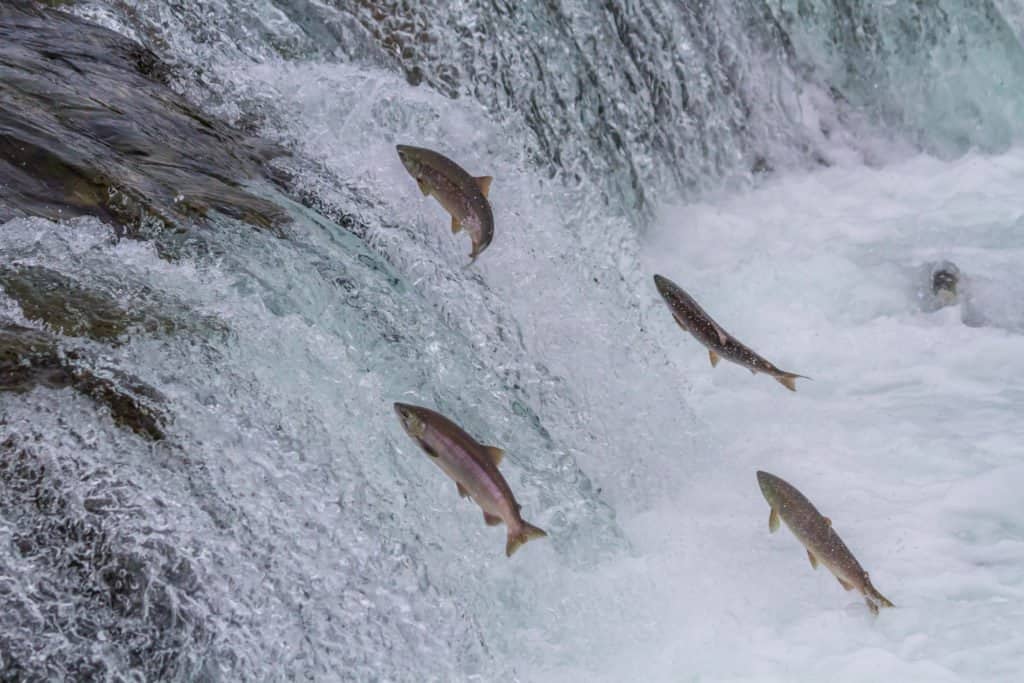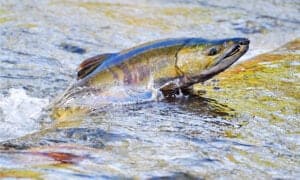The short video below shows the beautiful transformation of sockeye salmon that occurs when they swim upriver back to their original spawning grounds. The fish all come here to breed and complete their life cycle. They live at sea their entire lives until the time to breed comes. Then they travel to the mouth of the river from which they spawned three to seven years ago. The females lay up to 5,000 eggs and the males fertilize them. Within one week of breeding, the adult fish die.
Watch the Video Below!
Bears often know the spawning grounds well and return there each year between June and July to fatten up on the bounty of salmon. Frequently called a salmon run, the proper term for this return from the sea to spawn is called anadromy. Let’s learn more about sockeye salmon and their importance to the economy.
Why Do Sockeye Salmon Change Color When They Swim Upriver?
Normally, sockeye salmon appear silvery with dark blue along their back. When the salmon swim upriver to spawn, their color changes amazingly! Due to the amount of krill and other crustaceans they eat while at sea, the carotenoid pigments leach into their skin and cause them to become bright pink or red. This color change is a natural adaptation to attract a mate. The brighter the coloration of a salmon, the healthier and more well-fed the fish was during its time at sea. By the time the fish finish spawning, all the color has moved into their skin and the eggs, leaving their flesh bright white. Male salmon also grow an elongated face with a hook at the end.

Sometimes, salmon have to jump up waterfalls to reach their destination!
©Sekar B/Shutterstock.com
Why Do Salmon Die After Spawning?
These salmon spend all of their energy swimming upriver again the current, jumping over waterfalls, and avoiding bears. All this just to come back home and reproduce. It is their only goal to spawn when they finally reach the area where they were born. Because the trip back to their birthplace is so exhausting, they cannot make the return trip to the ocean. Many salmon become easy prey for bears, eagles, wolves, and foxes during this time. Humans hunt and eat them, as well.
In fact, sockeye salmon are the most economically important species in Alaska. According to the NOAA Fisheries commercial fishing landings database, sockeye salmon had a total commercial landing of more than 383 million pounds in 2022, with an approximate value of $550 million. Most of these fish come from fisheries and programs are in place to prevent overfishing.
The photo featured at the top of this post is © Eduardo Baena/iStock via Getty Images
Thank you for reading! Have some feedback for us? Contact the AZ Animals editorial team.







